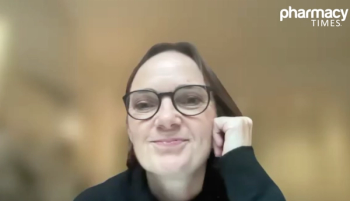Cell and gene therapies are rapidly transforming the therapeutic landscape, particularly in oncology, where they have emerged as powerful tools for addressing hematologic malignancies and, increasingly, solid tumors. With annual growth projected at 36% through 2030 and 10 to 20 new approvals expected each year, oncology pharmacists are likely to encounter these therapies more frequently across care settings.1
A Growing Approval Footprint
As of December 2024, 106 cell therapy products have been approved globally: 33 gene therapies (13 of which are genetically modified cell therapies) and 73 non–genetically modified cell therapies.2-4 In the United States, the FDA had approved 44 cell therapy products as of March 6, 2025.5 This growing portfolio includes treatments for a wide range of cancers, with an expanding footprint into autoimmune and degenerative conditions.
Development Trends: Oncology at the Forefront
Gene therapy currently ranks third among therapeutic focus areas, with 2151 compounds in development in 2024 (Figure). Of these, 1192 are classified as genetically modified cell therapies, reflecting the convergence of gene and cell platforms.6 Chimeric antigen receptor (CAR) cell therapies ranked 10th with 795 candidates, holding steady from 2023.6
CAR T-cell therapies continue to dominate the genetically modified space. They account for 32% of total cell and gene therapy pipelines and target cancer treatment in 97% of cases.4,7 Meanwhile, non–genetically modified cell therapies—including mesenchymal and stem cell products—represent 32% of the pipeline and are primarily being explored for regenerative medicine and nononcology rare diseases.4
Oncology indications remain the primary focus across modalities. The most targeted cancers include acute myeloid leukemia, liver cancer, and pancreatic cancer.4 Nononcology applications are growing, however, particularly for conditions such as osteoarthritis, type 1 diabetes, and Parkinson disease.
Adoptive Cell Therapy: CAR T, TIL, and TCR Approaches
Adoptive cell therapies (ACTs)—namely CAR T, tumor-infiltrating lymphocyte (TIL), and T-cell receptor (TCR) therapies—have seen fluctuating pipeline activity, peaking in 2022 and declining slightly since.8 Most CAR T-cell therapies focus on hematologic malignancies, with non-Hodgkin lymphoma, acute lymphoblastic leukemia, and multiple myeloma leading development. Solid tumor targets are more prevalent in TIL and TCR programs, which focus on gastrointestinal, lung, and skin cancers.1,8
CD19, B-cell maturation antigen, and CD22 are the most common targets in oncology pipelines, with other notable targets including CD20, HER2, CD30, CD33, and CD123.1 Nononcology programs increasingly target VEGF and other inflammatory mediators.9
Regulatory Pipeline and Late-Stage Candidates
A substantial number of therapies are nearing market. Among non–genetically modified cell therapies, 43 are in phase 3 trials and 3 are in preregistration.2 For genetically modified cell therapies, 7 are in phase 3 and 5 are in preregistration. Currently, 68% of all approved cell therapy products fall under the non–genetically modified category.2
As these products move toward approval and integration into treatment pathways, pharmacists can expect greater formulary activity and operational complexity.
Challenges and Technology Innovations
Key scientific challenges include short-term cell persistence, antigen escape, and ineffective targeting in solid tumors, compounded by immunosuppressive tumor microenvironments and lengthy manufacturing processes.
However, technological advances are beginning to address these issues. The approval of the first CRISPR-Cas9-based therapy in 2023 has accelerated efforts toward allogeneic, off-the-shelf CAR T products.10,11 In vivo cell engineering—where genetic material is delivered directly to patient cells via nanoparticles or viral vectors—is another area of active development. Interius BioTherapeutics and Umoja Biopharma are leading early-stage human trials in this space.10
Natural killer (NK) cells are gaining attention because of their favorable safety profile, lower cytokine release syndrome risk, and ability to function in solid tumors. CAR-NK platforms are under investigation and could offer a new modality for treatment.6,7
Shifting to Earlier Lines of Therapy
There is a clear trend toward moving cell therapies into earlier lines of treatment. In October 2024, CAR T therapy axicabtagene ciloleucel (Yescarta; Kite Pharma) received FDA regenerative medicine advanced therapy designation as a first-line treatment for high-risk large B-cell lymphoma.10 This reflects a growing interest in using cell therapy to achieve more durable outcomes and reduce relapse risk.
Expansion Into Autoimmune Disease
While oncology remains the dominant indication, interest in autoimmune applications is expanding. CD19-directed CAR T therapy has shown promising outcomes in systemic lupus erythematosus, prompting more than a dozen trials targeting lupus, type 1 diabetes, myasthenia gravis, and multiple sclerosis.7,10 By late 2024, nononcology trials represented 51% of the total pipeline, up from 39% in 2023.9
Conclusions: Preparing for a New Era
About the Authors
Qianyao Qiu, PharmD, BCOP, is a clinical pharmacy specialist in stem cell transplant/hematology at Karmanos Cancer Institute in Detroit, Michigan.
Grace Ren, BS, has a bachelor’s degree in neuroscience from the Michigan State University Honors College and resides in Lansing, Michigan.
Cell and gene therapies are maturing from experimental innovations to established standards of care. Although this shift brings increased complexity for oncology pharmacists, it also has the potential to improve survival, quality of life, and treatment personalization.
Staying informed about late-stage pipeline products, preparing for earlier lines of therapy, and understanding the unique logistics of each platform—particularly around handling, preparation, and reimbursement—will be essential. With the field broadening into autoimmune and degenerative indications, cell therapy is not only redefining cancer care but also reshaping the broader landscape of modern medicine.
REFERENCES
Barrett D, Wendland A, Rose D, Yeeles S, Micklus A. Gene, Cell, & RNA Therapy Landscape Report: Q4 2024 Quarterly Data Report. American Society of Gene & Cell Therapy. Accessed February 2025. https://www.asgct.org/global/documents/asgct-citeline-q4-2024-report.aspx
Müller F, Taubmann J, Bucci L, et al. CD19 CAR T-cell therapy in autoimmune disease - a case series with follow-up. N Engl J Med. 2024;390(8):687-700. doi:10.1056/NEJMoa2308917
Barrett D, Wendland A, Rose D, Yeeles S, Micklus A. Gene, Cell, & RNA Therapy Landscape Report: Q3 2024 Quarterly Data Report. American Society of Gene & Cell Therapy. Accessed January 15, 2025. https://www.asgct.org/global/documents/asgct-citeline-q3-2024-report.aspx
Short L, Holt RA, Cullis PR, Evgin L. Direct in vivo CAR T cell engineering. Trends Pharmacol Sci. 2024;45(5):406-418. doi:10.1016/j.tips.2024.03.004







































































































































































































